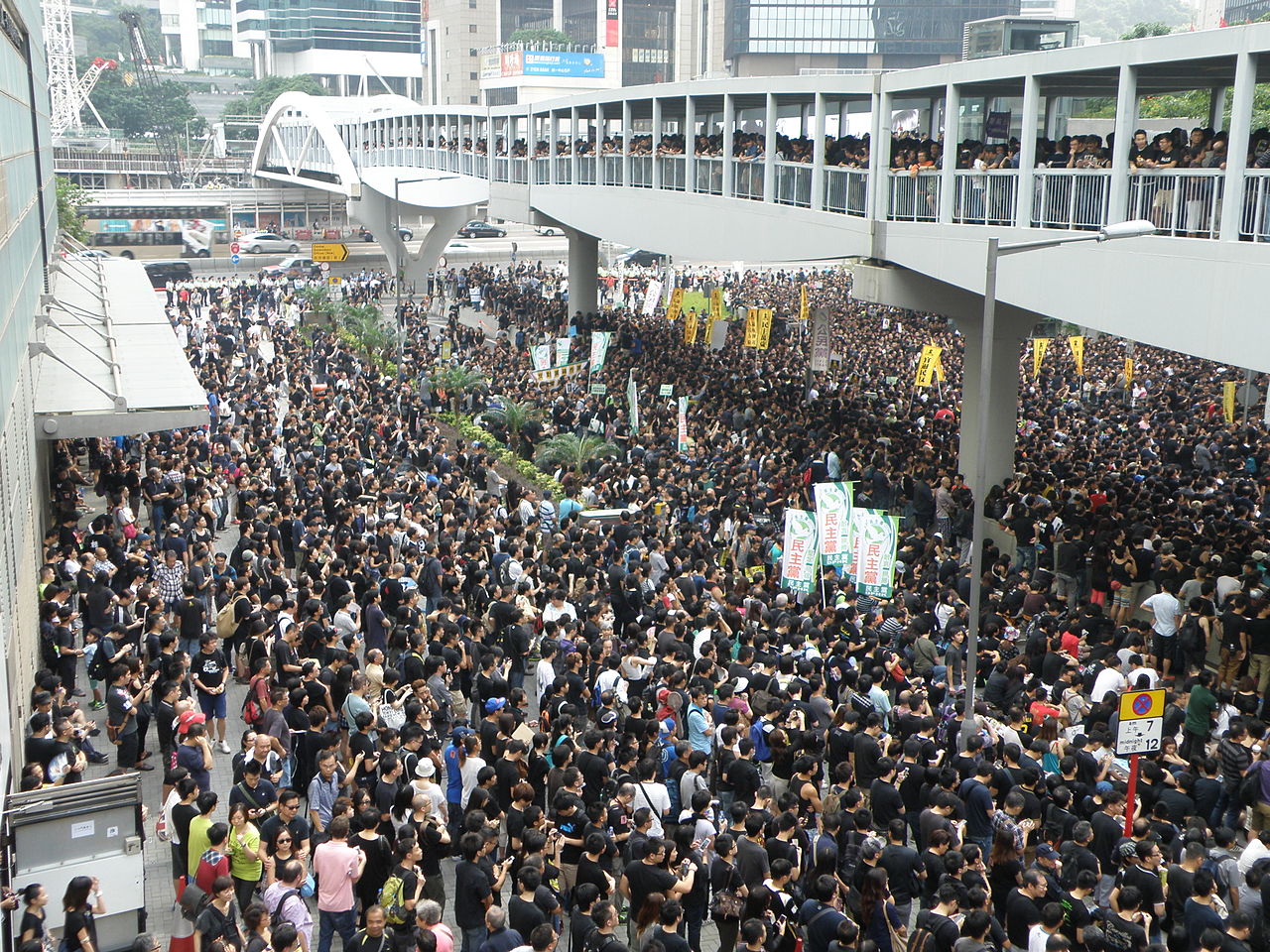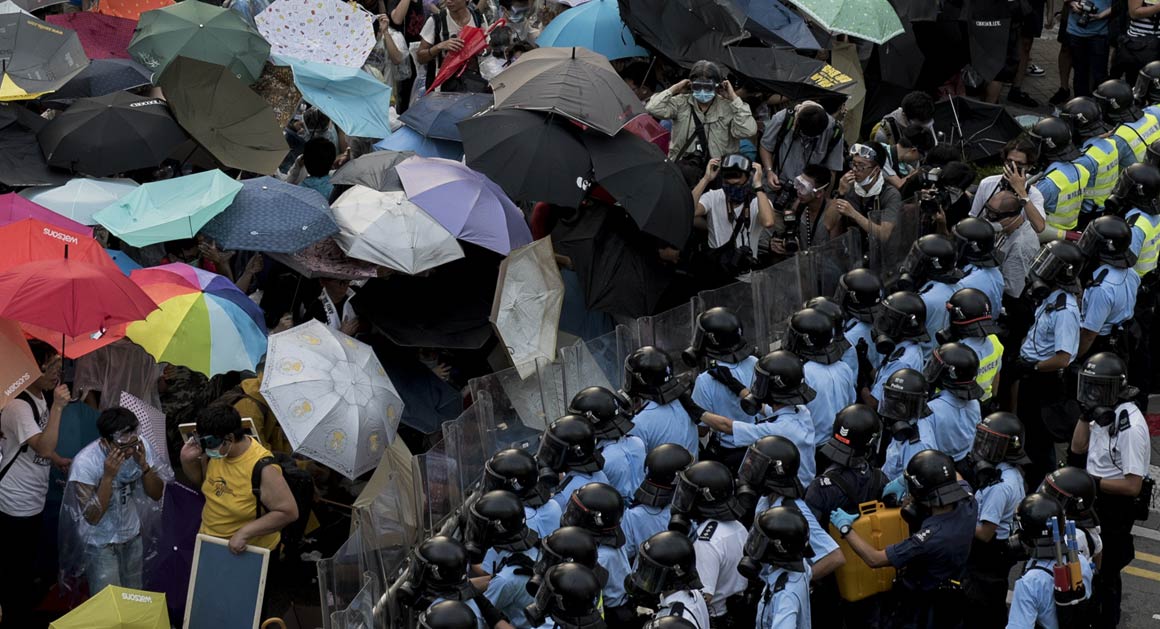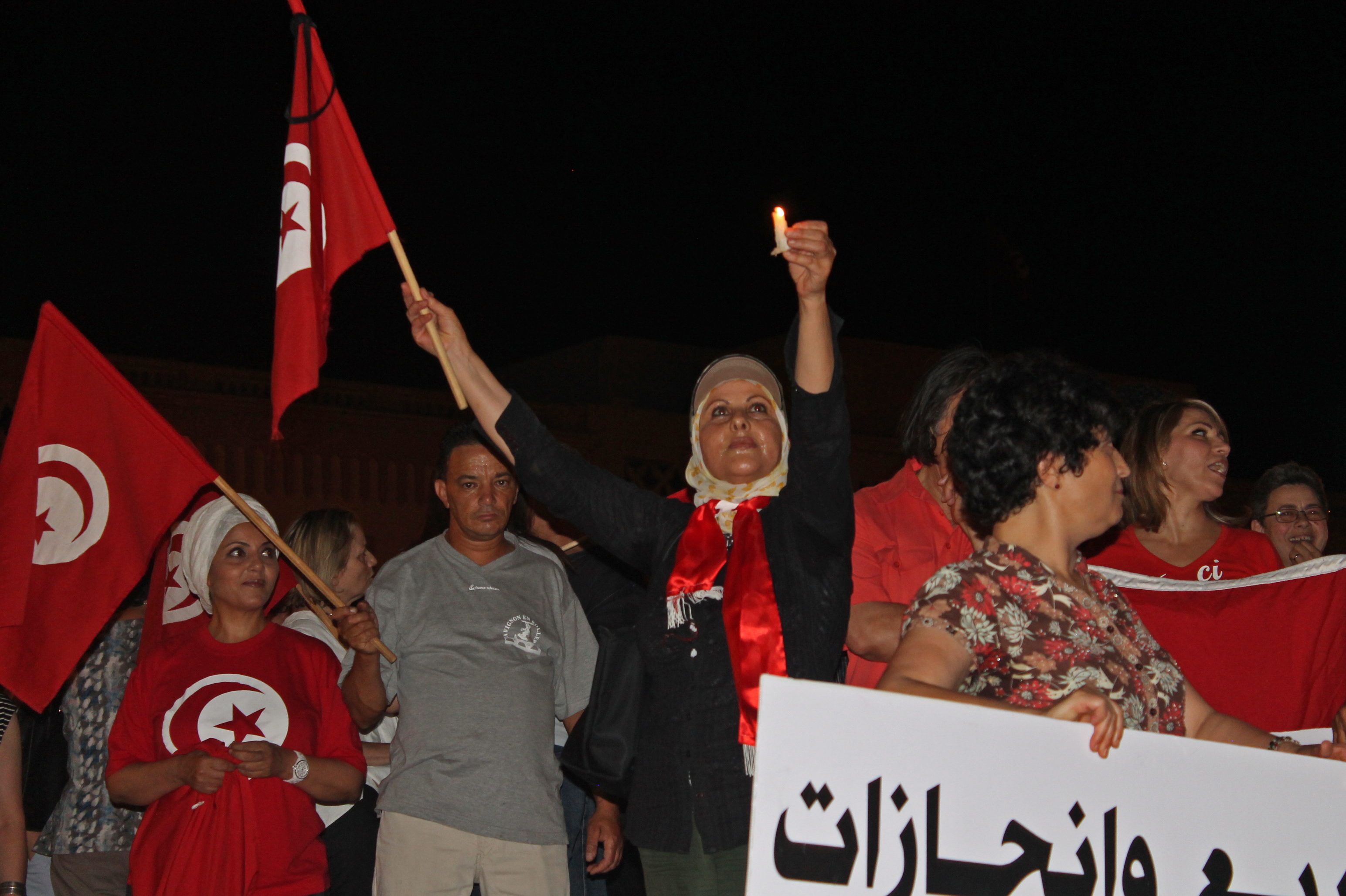By: Andrew Peoples

After three weeks of massive demonstrations in Hong Kong, student protests are finally running out of steam. The pro-democracy movement, coined at various points as the “Occupy Central” movement or the “Umbrella Revolution,” saw only about 10,000 protesters in the streets, far below the peak, yet still enough to trouble the Hong Kong government. The protesters in Hong Kong have not lost their fight, but rather are locked in a stalemate with the unyielding Hong Kong chief executive.
Who are Hong Kong’s protesters? No single group leads the protests in the city, but a coalition of organizations, generally composed of students, has been organizing them. Three main student-run groups galvanized the protests. The Hong Kong Federation of Students, the island city’s largest student group, and the Scholarism movement, another student group devoted to protesting Chinese patriotic education, started the initial protests. The groups organized a class boycott in late September to protest the restrictions on the nomination system for the election of the Hong Kong chief executive recently announced by the Chinese. The third major group, “Occupy Central with Love and Peace,” escalated the protests. Founded by a law professor at the University of Hong Kong, Occupy Central seized the opportunity offered by the student protests to create a larger demonstration against the electoral restrictions, encouraging protesters to flood Hong Kong’s central business district. The protesters have been widely praised for their non-violent tactics and general politeness. The subsequent police reaction, involving widespread use of tear gas, therefore only generated further support for the students’ cause.
The students’ protests are in response to encroachment on Hong Kong’s political system by the mainland Chinese government and the Communist Party. The protesters argue that in the handover of Hong Kong from Britain to China in 1997, citizens of the city were promised eventual universal suffrage. The electoral changes adopted by the Hong Kong government, while nominally allowing universal suffrage, create a legislative council to nominate candidates for the position of Hong Kong chief executives. The members of this council are to be nominated by local business factions and Beijing-loyalists, essentially preventing anyone not loyal to the Communist Party from ever being nominated. The election committee will be modeled on the current corporatist system that nominates Hong Kong’s chief executive candidates, which produced the city’s current Beijing-loyalist leader, C. Y. Leung. Emily Lau, chairwoman of Hong Kong’s Democratic Party, compares the system to Iran’s electoral system. She argues that citizens of that country get to vote, but only from a severely restricted list of candidates. Her comments describe a trend that has been taking place for several years in the city.
Since the city’s handover from British to Chinese rule, the Chinese Communist Party has been slowly infringing upon Hong Kong’s democratic freedoms. The United Kingdom gave the city back to China under the promise that it would be governed with a “one country, two systems” policy that would give Hong Kong a “high degree of autonomy” until complete reunification, scheduled for 2047. Yet in 2004, the Chinese government under President Hu Jintao declared that it must approve of any changes to Hong Kong’s election laws. And now, President Xi Jinping is following his predecessor’s by continuing to assert control over Hong Kong’s electoral system. The next elections in the city are set for 2017.
As the protests drag on, the rhetorical divide between the United States and China over the issue deepens. Chinese media blame the United States for instigating the protests, due partially to the United States’ expressed support for democratic elections in Hong Kong under the city’s constitution that guarantees autonomy until 2047. The current situation has reached an uneasy impasse. Leung, Hong Kong’s chief executive, has refused protesters’ demands to step down and declared revision of the electoral changes to be “impossible.” His second-in-command, Carrie Lam, canceled talks between students and the government, as tensions start to rise in the city against the students over disruptions in transportation and business. Counterprotest groups have sprung up as well. Organizations such as the Blue Ribbon Group, which is composed of much older members than the students they oppose, have formed to stage protests demanding that the students clear the streets. Police have given tacit support to the Blue Ribbon group, allowing them in at least one instance to pass through police barricades and into the student encampments to shout slogans at the protesters. Other pro-Beijing groups, such as the Silent Majority for Hong Kong, have formed as well, staging events such as an anti-Occupy Central parade.Some of the counterprotesters are avid communist party supporters, but some are simply Hong Kong residents who want their city to return to normal life.
Even as groups opposed to the students organize, the protesters’ ideals maintain widespread support. A poll on October 4th found that 59 percent of Hong Kong citizens surveyed think that Hong Kong should reject the electoral reforms. Even if there are fewer students in the street, they still remain a powerful enough force to disrupt normal life in the city. The struggle for democracy in Hong Kong is far from over.

